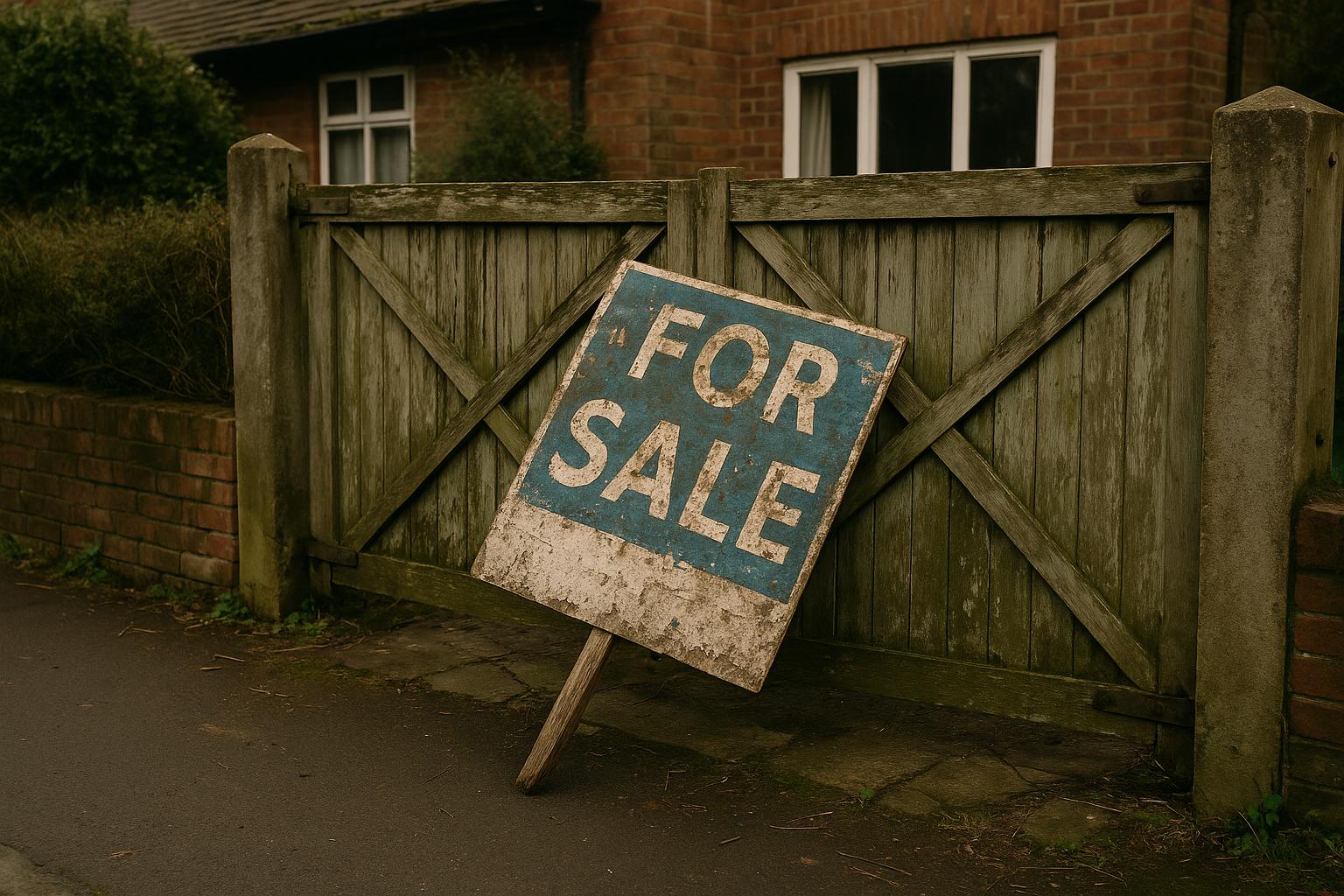Properties in the south of England have experienced notable declines in asking prices over the past year, much to the disappointment of homeowners, according to property portal Rightmove. Key regions including London, the southwest, the southeast, and the West Midlands have all seen listing prices slide in the 12 months leading up to September. The southwest has been the hardest hit, with asking prices dropping by 1.3% to an average of £382,531, driven largely by a waning demand for coastal properties. This downturn is attributed to buyers gravitating back to urban centres and the deterrent effect of punitive 100% council tax levies on second homes, which have dampened interest among holiday home hunters.
London’s property market has also suffered a downturn, with asking prices falling 1.1% to an average of £675,074—a decrease of about £7,425 on the year. The capital’s high-value property sector has been particularly affected by harsh wealth taxes, prompting a flight of affluent buyers overseas. Affordability constraints have further suppressed demand, contributing to the dip in asking prices. An illustrative case is a Marylebone mews home where the asking price dropped dramatically from £4.5 million to £2.25 million in less than a year. Meanwhile, homes in the southeast average £479,982 in listing price, down 0.7%, and properties in the West Midlands have seen a marginal decline of 0.1%, now averaging £293,645.
While the south faces falling prices, other regions across Britain have seen growth. The northwest stands out with a 3.2% rise in asking prices, reaching £270,275, according to Rightmove. Scotland has experienced a 2.6% uplift to £199,146, while Yorkshire and the Humber, Wales, and the East Midlands have also seen modest gains ranging from 0.9% to 2%. The northeast and the east of England have recorded smaller increases of 0.5% and 0.2%, respectively.
Despite these regional variations in asking prices, the overall shift in mortgage costs presents a silver lining for many homeowners. Lower mortgage rates have led to a reduction in average monthly mortgage payments across all regions compared to a year ago. Nationally, the average monthly mortgage cost has fallen by £84, from £1,590 to £1,506, saving homeowners over £1,000 annually. London benefits the most, with monthly mortgage payments dropping by £181 to an average of £2,927. The southeast and southwest also see significant savings, with reductions of £120 and £106 per month respectively. Scotland, on the other hand, reports the smallest fall in mortgage payments, down by just £23 a month to £833.
The decline in mortgage rates is linked to reductions in the Bank of England base rate, which have pulled the average two-year fixed mortgage rate down from 4.99% last year to 4.53% currently. This easing of borrowing costs has somewhat offset the challenges posed by falling property values in southern regions, providing improved affordability for buyers in these traditionally more expensive areas. Colleen Babcock, a property expert at Rightmove, commented that increased competition among sellers and the impact of higher stamp duty rates have contributed to softening asking prices in London and the south of England. However, she emphasised that despite these improvements, affordability remains stretched due to the high baseline prices.
Contrasting the Rightmove data, official figures from the Office for National Statistics (ONS) indicate a different trend in average house prices up to mid-2025. The ONS reports a 3.3% increase in average house prices in England over the year to June 2025, with prices reaching £291,000. Wales and Scotland also saw annual increases of 2.6% and 5.9%, respectively. Such data suggest a more general upward trajectory in house prices across the UK, highlighting regional disparities and possibly reflecting differences between average sale prices and asking prices, which can diverge in response to market conditions and seller behaviour.
Earlier ONS reports from 2023 noted that average house prices in England hovered around £310,000, having risen from a low point earlier that year, while Scotland and Wales showed minor fluctuations in average prices. These variations underline that while some regions are experiencing slight price reductions or stagnation, others continue to see a degree of price growth, reflecting a complex and regionally nuanced housing market.
In summary, while southern England is witnessing a decline in asking prices and a moderation in mortgage costs that favour buyers, official statistics reveal a broader picture of ongoing price growth in other parts of the UK. The housing market remains highly regionalised, influenced by factors such as tax policies on second homes, evolving demand patterns, and macroeconomic influences including interest rate adjustments.
📌 Reference Map:
- Paragraph 1 – [1]
- Paragraph 2 – [1]
- Paragraph 3 – [1]
- Paragraph 4 – [1]
- Paragraph 5 – [1]
- Paragraph 6 – [1]
- Paragraph 7 – [2], [3], [4], [5], [6], [7]
Source: Noah Wire Services
